Art & Exhibitions
Leila Heller Has Big Plans Next Year for Her New Dubai Outpost
Her 14,000 square-foot gallery opened in November.
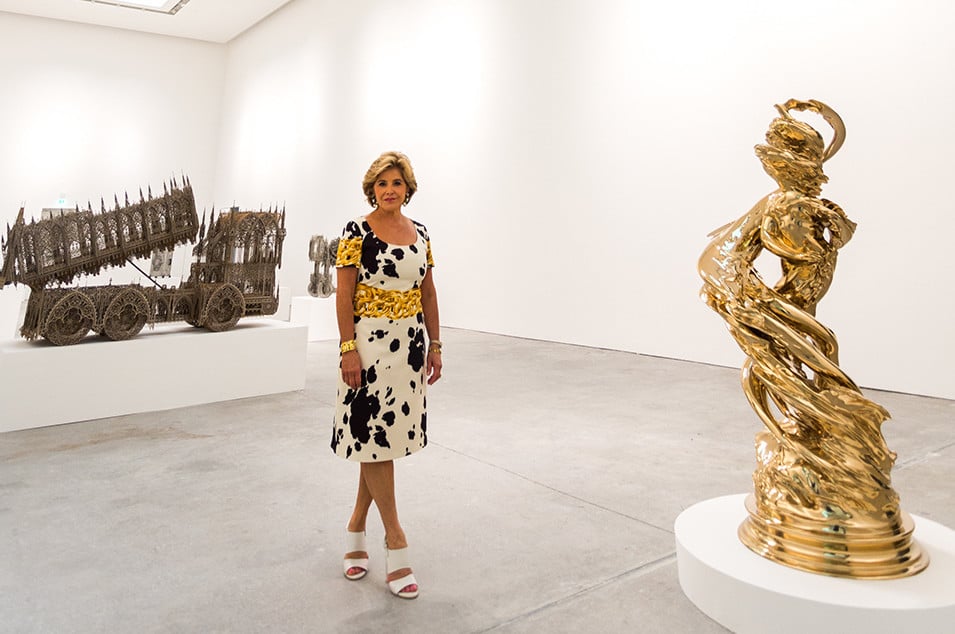
Her 14,000 square-foot gallery opened in November.

Myrna Ayad

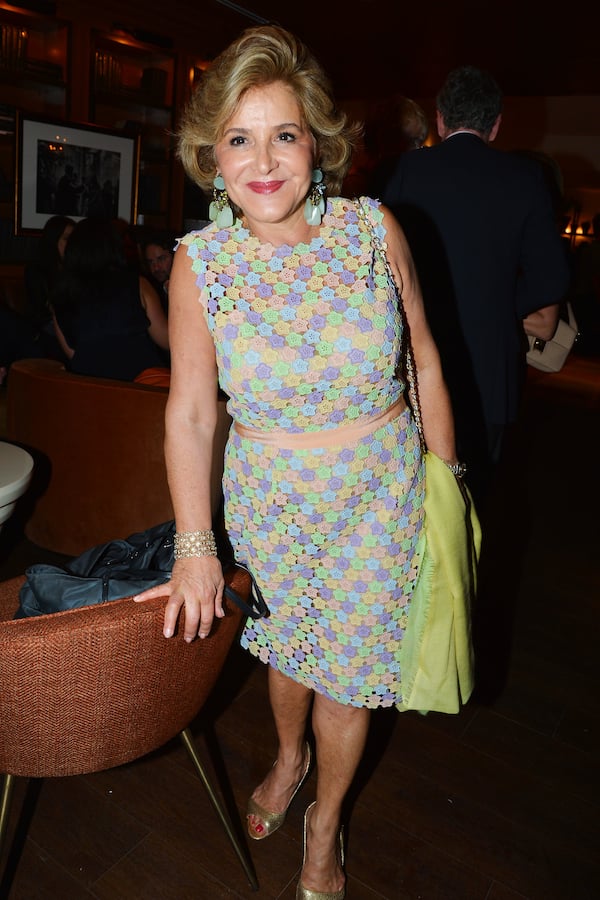
Leila Heller
Photo: Courtesy © Patrick McMullan; patrickmcmullan.com.
Five years ago, Leila Heller was lunching with Sheikha Lulu Al Sabah at the Americano in Chelsea and told the Kuwaiti dealer that she was looking for a space in Dubai. In November, the feisty Iranian-born gallerist opened her 14,000 square-foot Dubai outpost within Alserkal Avenue, the emirate’s pioneering cultural district.
It is the largest gallery in the Avenue and perhaps the largest in the Gulf—a size and design envisaged by Leila’s elder son, Alexander. “I did build the ultimate art space,” he says. “There was no limitation to what we could do.”
Conceptualised by New York’s Charlap Hyman and Herrero, which built Salon 24 and Tina Kim Gallery in New York, the gallery was “Dubai-nised” says Alexander, by Omar Ghafour of Lightspace Design. Leila, whose gallery has been a regular participant at the Art Dubai and Abu Dhabi Art fairs, says the idea for a space in the region solidified seven years ago. She had begun discussions with potential partners for the Dubai branch, but it wasn’t until last March that the art collector James Khazaei came on board. “It all happened so organically,” she says. “James has been a loyal customer to the gallery, a friend and a mentor to Alexander, who sought his advice about architecture, the secondary market and the Dubai art scene.”
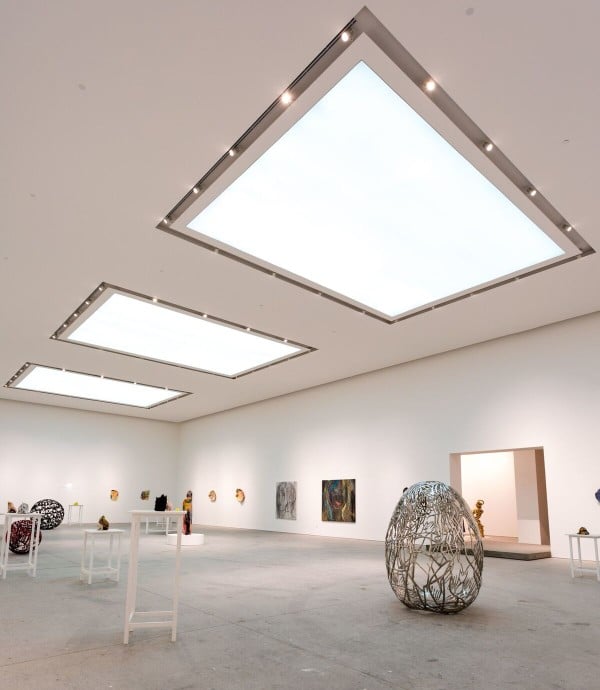
Interior shot of Leila Heller Gallery in Dubai.
Image: Leila Heller Gallery.
At just 24, Alexander has become integral in Leila Heller Gallery’s operations within the primary and secondary markets. Many remember the young art history graduate as a preppy, passionate kid who accompanied his mother to international art fairs, learning the tricks of the trade. “Any business decision is a huge risk, but I had a vision and I must give credit to Alexander, who was with me all the way from day one, in high school, when he came to the region,” says Leila. “He understood the global scope of opening a gallery in a region that is dear to us, but he knew we had to be very different.”
For Alexander, that meant size, design and a new collector base. For Leila, it meant blue-chip artists and a tight curatorial program. And for that, she sought the advice and support of Dr Shiva Balaghi, a cultural historian and visiting professor at Brown University who has come on board to build a solid curatorial framework.
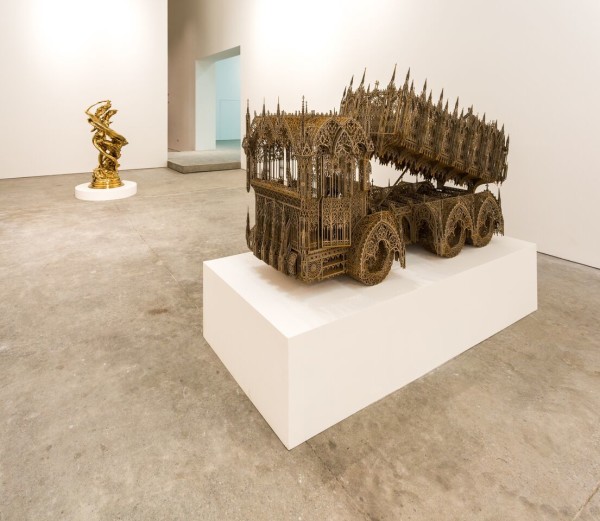
Interior of Leila Heller Gallery in Dubai.
Image: Courtesy of Leila Heller Gallery.
The Balaghi-Heller relationship actually began on campus about six years ago. Leila, a Brown University alumnus, brought Alexander for college visits and Balaghi had been reaching out to galleries, which represent Middle Eastern artists, such as Dubai’s The Third Line and Leila Heller, for literature. A couple of years ago, she hit a turning point in her life. “I knew I wanted to stay in the art world,” recalls Balaghi, who, after teaching for two decades, took a semester off and channeled her energy into Leila Heller Gallery’s curatorial structure.
“My job with Leila involves an educational pedagogical aspect where I work with curators, art writers and artists,” she says. The relationship, however, isn’t exclusive, and the Iranian-born scholar is eager to put together Middle Eastern shows just as she had done by co-curating Parviz Tanavoli’s 2015 retrospective at the Davis Museum at Wellesley College.
Dubai, says Balaghi, was a major pull. “The number one appeal for me at Leila Heller Gallery was Dubai,” she admits. “If you work on regional art, Dubai is the capital.”

Amer Ghada, A Hidden Kiss (2014).
Photo by Brian Buckley for Cheim & Read, New York.
The region is an aspect dear to Leila’s heart, not least for its proximity to her homeland. After completing undergraduate degrees in art history and French literature at Brown University, Leila pursued a Master’s degree at London’s Sotheby’s Institute of Art in 1976. When the Islamic Revolution swept Iran three years later, she was in New York curating a bank’s corporate collection. She obtained a green card and mustered up the courage to open her first gallery on Madison Avenue in 1983.
She quickly became known as the dealer who gave Iranian artists a voice in the New York art scene; for instance, YZ Kami’s first solo was at what was then known as Leila Taghinia Milani Heller Gallery in 1984. Other solo presentations Leila staged include those for Monir Shahroudy Farmanfarmaian, Nicky Nodjoumi and Charles Hossein Zenderoudi.

Interior shot of Leila Heller Gallery in Dubai.
Image: Leila Heller Gallery.
Over three decades later, the Dubai-based gallery’s next solo show will feature Y.Z. Kami, which will be the Iranian artist’s first in the region.
This approach is what Leila and her team have set out to do: “There will be a Middle Eastern focus, but in a different way,” she says. After debuting with Ghada Amer (a first in the Arab world) and Wim Delvoye, the gallery’s 2016 programming will see shows for Zaha Hadid, Afruz Amighi, Ross Bleckner and a possible exhibition featuring Farideh Lashai and Sohrab Sepehri.
That exhibition, says Leila, had been on her mind for some time, as it will seek to present the oeuvres of the teacher (Sepehri) and student (Lashai).
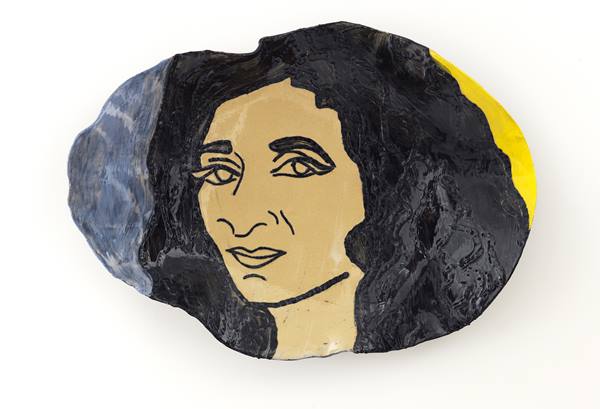
Amer Ghada, Self-Portrait in Blue and Yellow (2014).
Photo by Brian Buckley for Cheim & Read, New York.
At the last edition of Abu Dhabi Art, Leila Heller Gallery exhibited three paintings by the Lebanese modernist Paul Guiragossian, with whose estate the gallery is collaborating. “We are keen on implementing the same strategy that we’ve done with the estates of Marcus Grigorian and Lashai,” says Leila, referencing museum acquisitions for both artists. “It’s going to be blockbuster artists all the way,” says Leila, who is courting Ilya and Emilia Kabakov. But how will the drop in oil prices reflect on such pricey artwork? “We have taken a big risk, but we are also very confident that we have global collectors that will sustain this,” she says.
For Amer’s solo show, the Leila Heller Gallery team were seen sweeping floors, opening crates and eating pizza during the final stages of construction. Amer and Balaghi were holding their breath: the Egyptian artist’s delicate ceramics were en route from New York and thankfully arrived safely. “We imagined the show as an indoor sculpture park,” says Balaghi of the curation.
Some suspected that Amer’s risqué works might hit a sensitive chord in the emirate. On the contrary, four artworks have been sold to members of the UAE ruling family. Next on Leila’s agenda is a show of Emirati artists. “I feel so at home here,” she says. “And home means promoting the local art scene.”